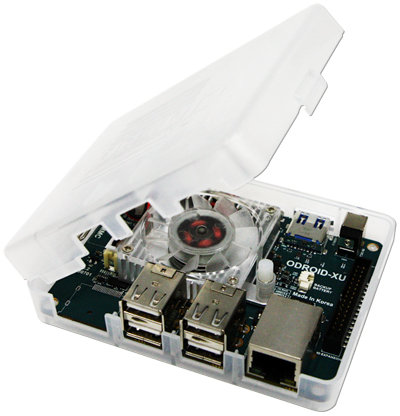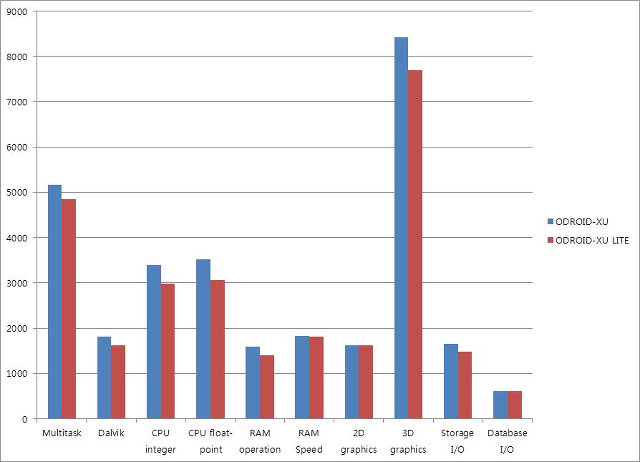Hardkernel ODROID-XU development board launched for $149, and now costs $169. Hardkernel has recently announced a cost-down version named ODROID-XU Lite, with almost exactly the same specifications: Samsung Exynos 5410 Octa Core big LITTLE Cortex A15/A7 processor, 2GB RAM, eMMC storage, etc.. The only differences are that the Cortex A15 cores are clocked up to 1.4GHz instead of 1.6GHz, and you’ll save $30, as the Lite version costs $139.
 Here’s a reminder of the specifications:
Here’s a reminder of the specifications:
- SoC – Samsung Exynos5 Octa Cortex-A15 @ 1.4GHz and Cortex-A7 big.LITTLE processor with PowerVR SGX544MP3 GPU
- System Memory – 2GB LPDDR3 RAM
- Storage – micro SD slot, eMMC 4.5 connector
- Video Output – micro HDMI + MPI LCD interface and Touch screen I2C ports (IPEX-40PIN)
- Audio – micro HDMI, headphone jack, MAX98090 Audio Codec
- Connectivity – 10/100M Ethernet via USB 2.0 (LAN9730)
- USB – 1x USB 3.0 Host, 1x USB 3.0 OTG, and 4x USB 2.0 Host
- Expansion Header – 30 pins (GPIO/IRQ/SPI/ADC)
- Misc – PWM connector for Cooler,
- Power Supply – 5V/4A (Plug specification is inner diameter 2.1mm and outer diameter 5.5mm)
- PMIC – MAX77802 10 high-efficiency Buck regulators and 32 LDOs.
This price makes it the cheapest Cortex A15 development platform available today. The 200MHz difference corresponds to a loss of 12.5% in raw CPU performance, but Antutu reports about 8% performance hit compared to the original version of the board. There’s virtually no difference in terms of RAM bandwidth, database I/O, and 2D graphics.

The company provides support for Android and Linux for their ODROID-XU (Lite) boards.
To get further information and/or pruchase the board, visit Hardkernel’s ODROID-XU Lite product page.

Jean-Luc started CNX Software in 2010 as a part-time endeavor, before quitting his job as a software engineering manager, and starting to write daily news, and reviews full time later in 2011.
Support CNX Software! Donate via cryptocurrencies, become a Patron on Patreon, or purchase goods on Amazon or Aliexpress




